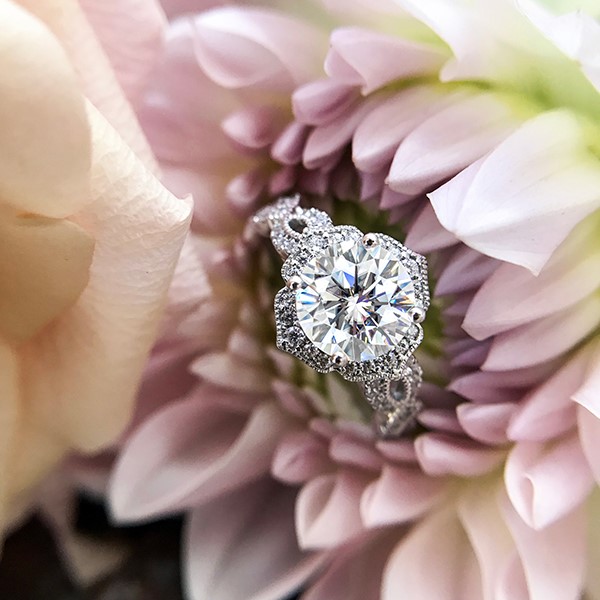Diamond and Moissanite minerals are valuable components in the manufacture of the wedding and engagement rings. The rings formed by Moissanite and diamond minerals are gorgeous confusing in many people who try to find out which one amongst the two have got more eco-friendly benefits.
These two metals have similar properties and results driven to successfully execute unique and attractive characteristics to the users of the rings. Different people have different tastes and preferences on the choices that they make on these metals based on their value and durability of the metals. Moissanite has the highest eco-friendly benefits in the following ways.
1. Moissanite undergoes synthesis in Laboratories
Moissanite metals are formed in the laboratories. These metals require advanced technology throughout the whole process to manufacture the metals. Many ring manufacturers prefer Moissanite to diamond because when you use this metal, you don’t need to undergo the mining process to extract it. You only need to know how to form the metal using other chemicals in the laboratories.
When you use Moissanite to manufacture engagement rings, indeed no earth structure is moved to obtain this lovely mineral. Mining is not a pretty process to exact metals because you need to dig big holes on the earth surface. Conversely, to obtain diamond, you need to carry out the mining process in search of the diamond gem. Mining causes a lot of destruction to the rivers, plants, and ecosystems that surround the mines.
Additionally, the deep, ugly holes left behind after carrying out mining process negatively change the natural beauty of the environment. The structure of the land is wholly changed to appear ugly. Finally, mining distorts the beneficial land use patterns such as agriculture which generates enhances food security.
2. Moissanite is synthesized with a smaller carbon footprint compared to diamond
The carbon content in Moissanite is low compared to the carbon content in diamonds. The smaller carbon footprint results in less environmental impact when exposed to heat. Diamond is an allotrope of carbon because it occurs naturally on the earth surface, unlike Moissanite which rarely occurs naturally unless synthesized in the laboratory.
Many workers, who are engaged in the mining of diamonds, usually suffer from Pneumoconiosis diseases because they are exposed to high carbon content found in the diamond metals. This disorder is associated with skin disorder conditions such as the inflammation of the hair follicles. Additionally, oral mucosal lesions are reported from skin exposure.
3. Moissanite is made from silicon carbide
Silicon carbide is a stable element found in Moissanite. Silicon carbide has chemically inert compounds which form tough material. The compound hardness has a rating of 9 close to diamond. Its resistance to chemical reaction makes silicon carbide a suitable compound for Moissanite because it can be manufactured from the lab and it is free from any reaction with the atmospheric gas compounds.
4. Moissanite is conflict-free from the environmental conflicts
Moissanite is obtained in a conflict-free environment, unlike the diamonds which are obtained in rebel movements which are against human rights abuses, environmental degradation, poverty and other social issues associated with the environment.
Creating Moissanite does not have financial rebel movements; it protects against human rights, minimizes environmental degradation, maintains safe and responsible labor practices and supports community development. Therefore, going for Moissanite is a significant milestone that will enhance the manufacture of the engagement and wedding rings with ease.
5. Moissanite is recyclable
Diamonds have a history of civil war, environmental devastation, and labor abuses. In this case, its mining process is the most environmentally destructive types of mining in all the major mineral mines.
Therefore, Moissanite stands out to help diminish some of the harmful and dirty practices by synthesizing the metals with recyclable materials. The components used to manufacture Moissanite are purely recyclable. Moissanite can be recycled to restore its unique appearance without altering its value.
Final verdict
Moissanite and diamond minerals leave no stone unturned to ensure that the manufacturers can produce high quality engagement and wedding rings. These two metals provide unique features with the ultimate goal of convincing potential customers’ with their suitable appearance.
The synthesized minerals are eco-friendly because they decrease the global demand for mined metals. These metals have a direct impact on the nature and standards of the environment.
Moissanite minimizes the socially destructive nature of the dirty diamond and other metals in mining processes. This is evident when Moissanite is recycled repeatedly without degrading its quality.

